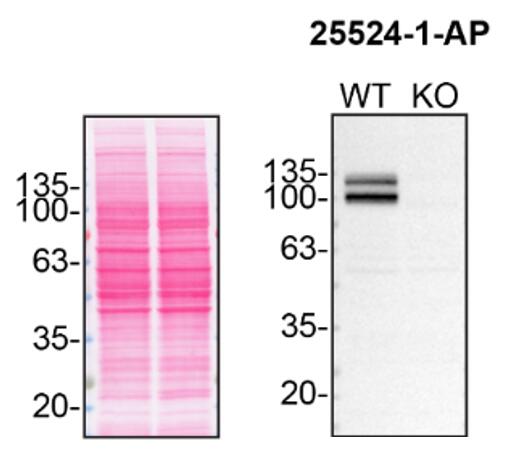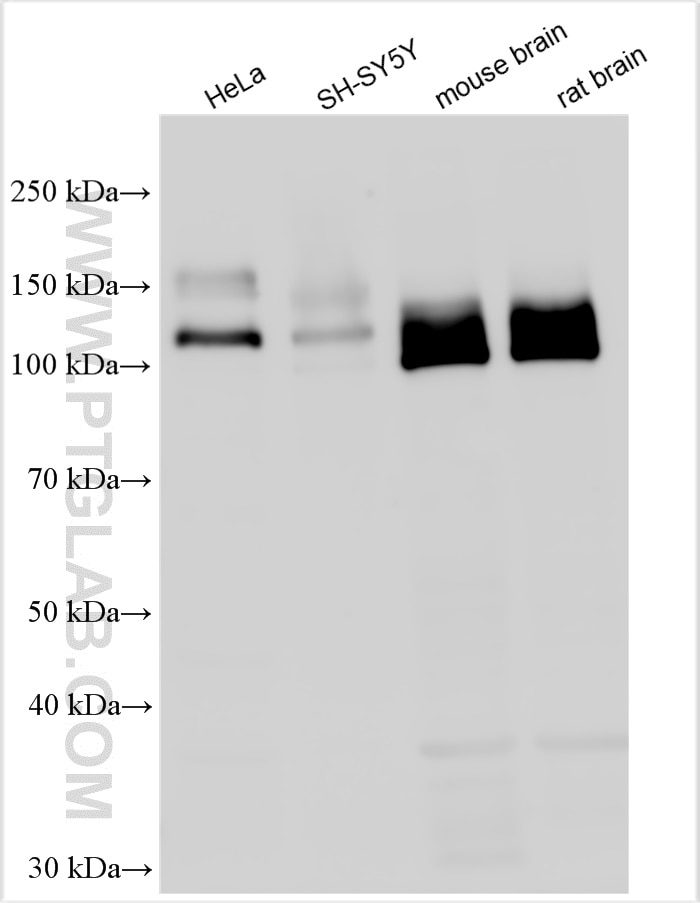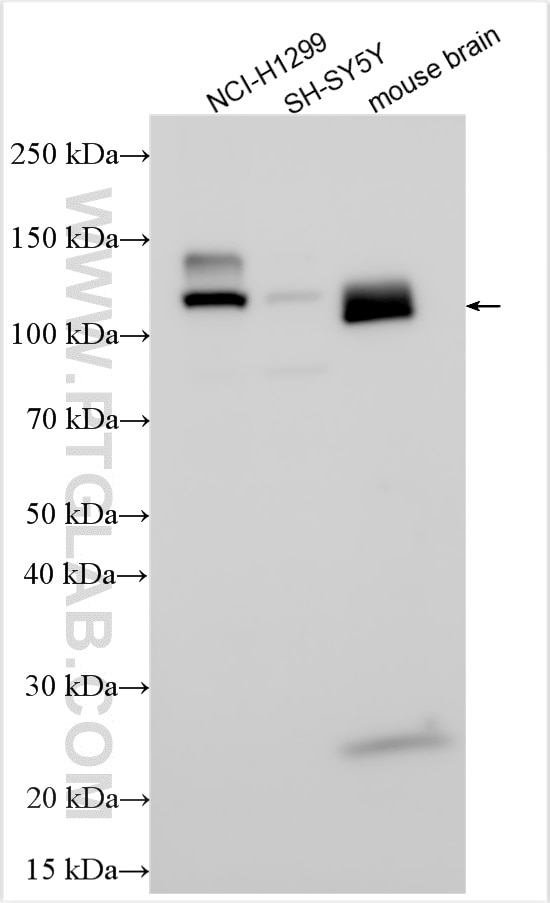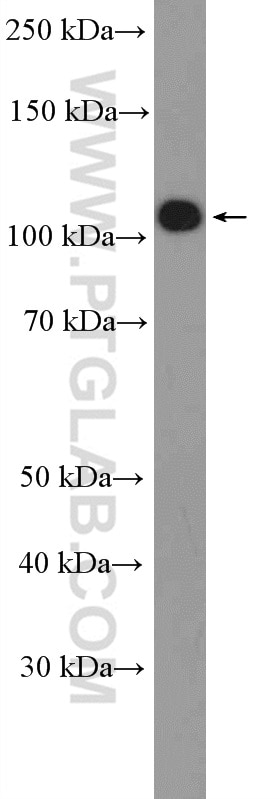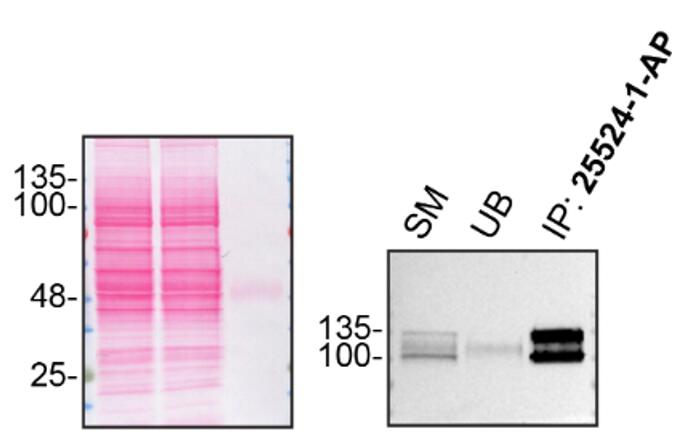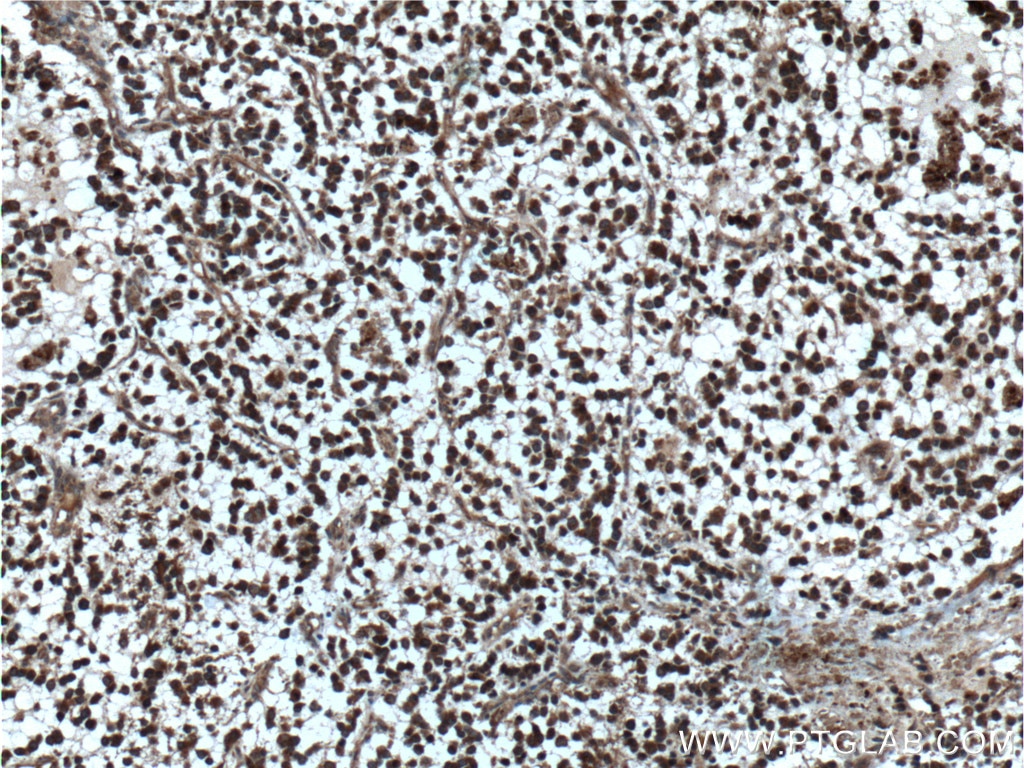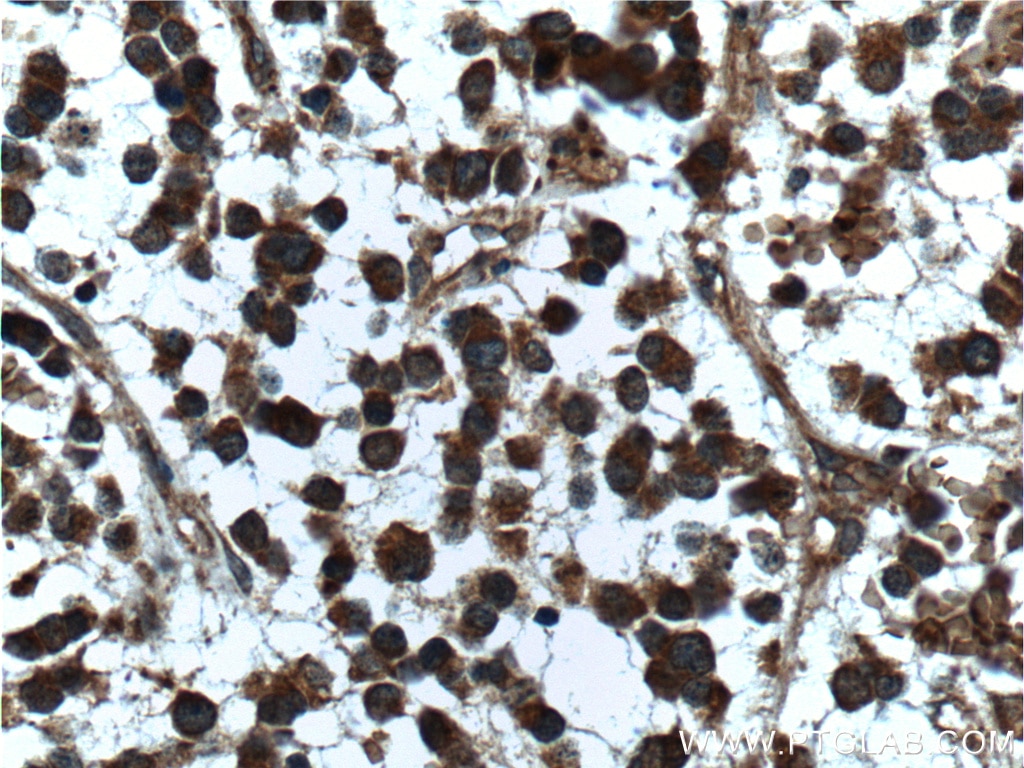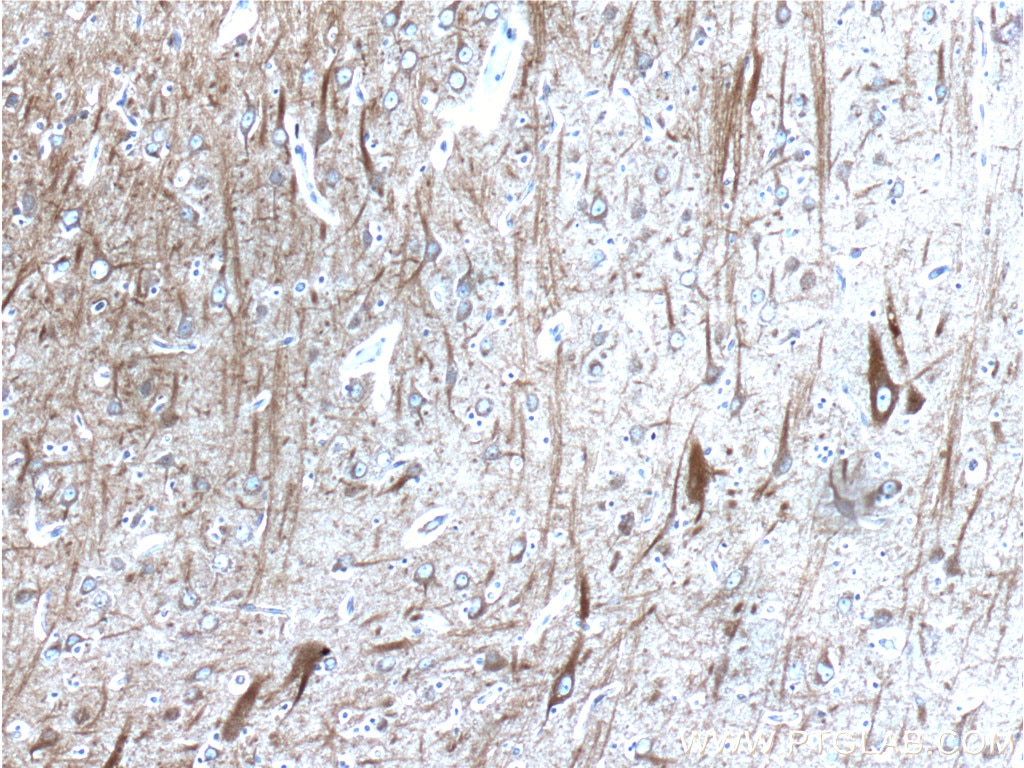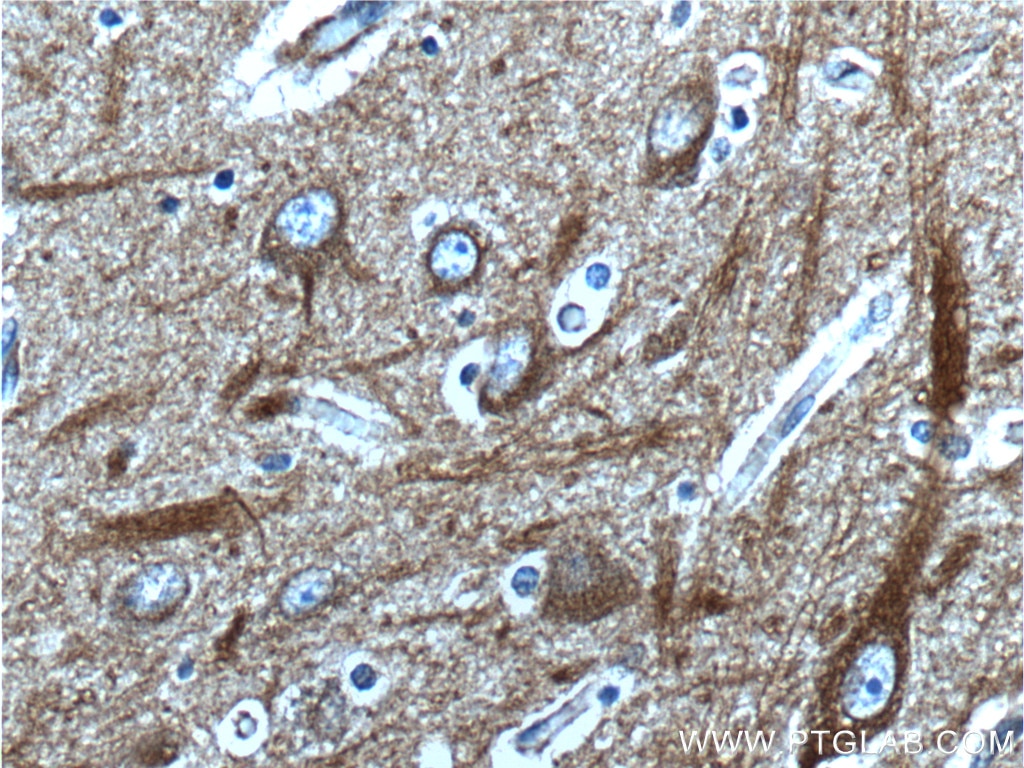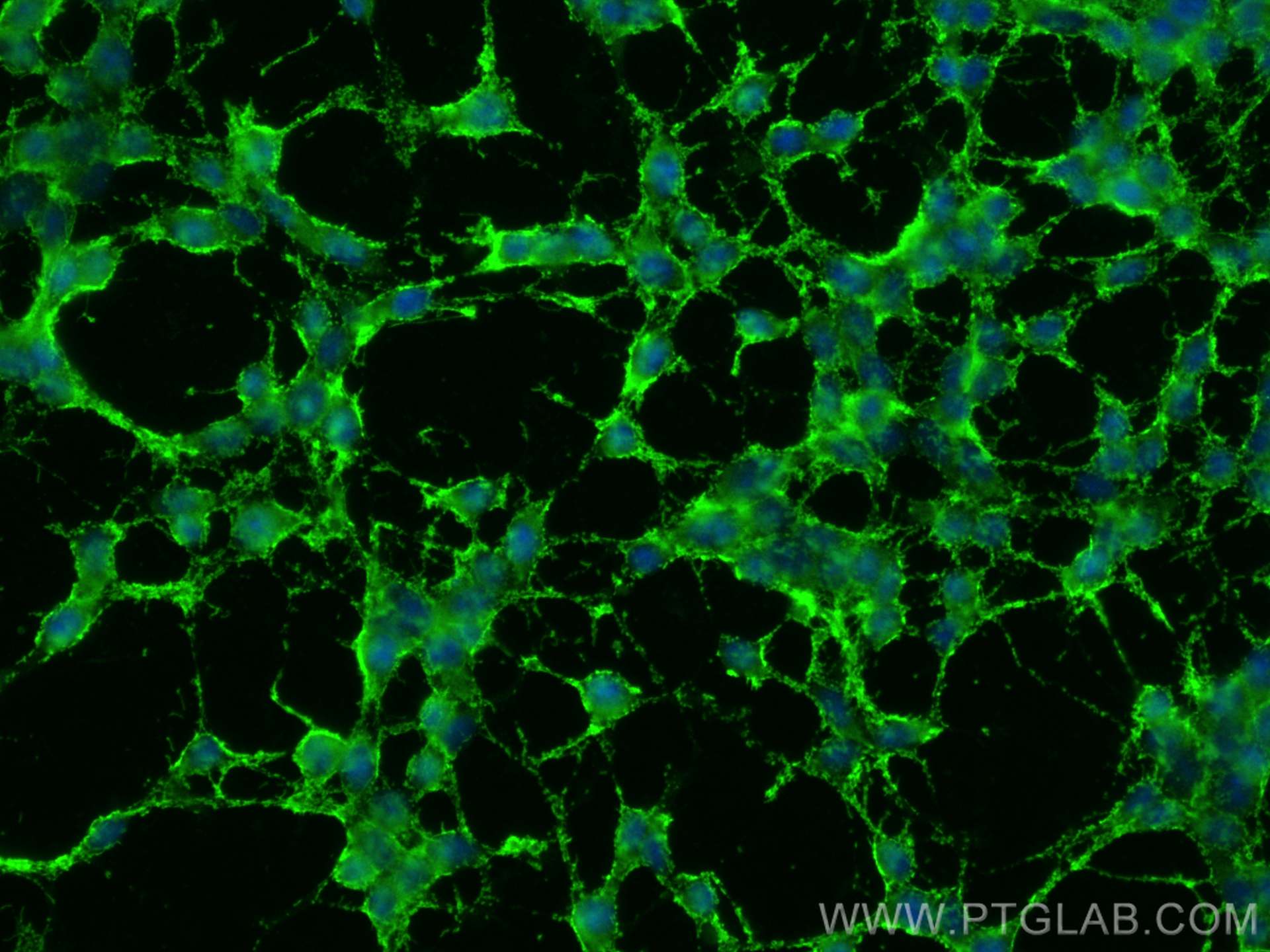- Phare
- Validé par KD/KO
Anticorps Polyclonal de lapin anti-APP/Beta Amyloid
APP/Beta Amyloid Polyclonal Antibody for WB, IHC, IF/ICC, ELISA
Hôte / Isotype
Lapin / IgG
Réactivité testée
Humain, rat, souris et plus (1)
Applications
WB, IHC, IF/ICC, ELISA
Conjugaison
Non conjugué
N° de cat : 25524-1-AP
Synonymes
Galerie de données de validation
Applications testées
| Résultats positifs en WB | cellules SH-SY5Y, cellules C6, cellules HeLa, cellules NCI-H1299, tissu cérébral de rat, tissu cérébral de souris |
| Résultats positifs en IHC | tissu de gliome humain, tissu cérébral humain il est suggéré de démasquer l'antigène avec un tampon de TE buffer pH 9.0; (*) À défaut, 'le démasquage de l'antigène peut être 'effectué avec un tampon citrate pH 6,0. |
| Résultats positifs en IF/ICC | cellules SH-SY5Y, |
Dilution recommandée
| Application | Dilution |
|---|---|
| Western Blot (WB) | WB : 1:500-1:2000 |
| Immunohistochimie (IHC) | IHC : 1:50-1:500 |
| Immunofluorescence (IF)/ICC | IF/ICC : 1:50-1:500 |
| It is recommended that this reagent should be titrated in each testing system to obtain optimal results. | |
| Sample-dependent, check data in validation data gallery | |
Applications publiées
| WB | See 76 publications below |
| IHC | See 21 publications below |
| IF | See 28 publications below |
Informations sur le produit
25524-1-AP cible APP/Beta Amyloid dans les applications de WB, IHC, IF/ICC, ELISA et montre une réactivité avec des échantillons Humain, rat, souris
| Réactivité | Humain, rat, souris |
| Réactivité citée | rat, Humain, poisson-zèbre, souris |
| Hôte / Isotype | Lapin / IgG |
| Clonalité | Polyclonal |
| Type | Anticorps |
| Immunogène | APP/Beta Amyloid Protéine recombinante Ag22408 |
| Nom complet | amyloid beta (A4) precursor protein |
| Poids moléculaire observé | 100 kDa |
| Numéro d’acquisition GenBank | BC065529 |
| Symbole du gène | APP |
| Identification du gène (NCBI) | 351 |
| Conjugaison | Non conjugué |
| Forme | Liquide |
| Méthode de purification | Purification par affinité contre l'antigène |
| Tampon de stockage | PBS with 0.02% sodium azide and 50% glycerol |
| Conditions de stockage | Stocker à -20°C. Stable pendant un an après l'expédition. L'aliquotage n'est pas nécessaire pour le stockage à -20oC Les 20ul contiennent 0,1% de BSA. |
Informations générales
Aβ derives from APP via proteolytic cleavage by proteases called α-, β- and γ-secretase. The α-secretase cleavage precludes the formation of Aβ, while the β- and γ-cleavages generate APP components with amyloidogenic features. Amyloid beta A4 precursor protein(APP), encoded by APP gene which locate on human chromosome 21q, is a cell surface receptor and performs physiological functions on the surface of neurons relevant to neurite growth, neuronal adhesion and axonogenesis. APP expressed in all fetal tissues and is pronounced in brain, kidney, heart and spleen, but weak in liver. Defects in APP are the cause of Alzheimer disease type 1 (AD1). Amyloid β (Aβ) precursor protein (APP) is a 100-140 kDa transmembrane glycoprotein that exists as several isoforms. This antibody can recognize several isoforms of both mature and immature amyloid beta (A4) precursor protein, including APP770, APP677, APP695, APP696, APP733, APP751, APP752, and APP639. APP can be cleaved into several chains, this antibody could recognize fragments C99, Amyloid-beta protein 42, Amyloid-beta protein 40, C83, P3(40), C80, Gamma-secretase C-terminal fragment 59, Gamma-secretase C-terminal fragment 57, Gamma-secretase C-terminal fragment 50, C31.
Protocole
| Product Specific Protocols | |
|---|---|
| WB protocol for APP/Beta Amyloid antibody 25524-1-AP | Download protocol |
| IHC protocol for APP/Beta Amyloid antibody 25524-1-AP | Download protocol |
| IF protocol for APP/Beta Amyloid antibody 25524-1-AP | Download protocol |
| Standard Protocols | |
|---|---|
| Click here to view our Standard Protocols |
Publications
| Species | Application | Title |
|---|---|---|
J Clin Invest Chromosomal 3q amplicon encodes essential regulators of secretory vesicles that drive secretory addiction in cancer | ||
Neuron Loss of PYCR2 Causes Neurodegeneration by Increasing Cerebral Glycine Levels via SHMT2. | ||
Small Brain-Penetration and Neuron-Targeting DNA Nanoflowers Co-Delivering miR-124 and Rutin for Synergistic Therapy of Alzheimer's Disease. | ||
Biomater Res Controlled release of Clenbuterol from a hydroxyapatite carrier for the treatment of Alzheimer's Disease | ||
J Exp Clin Cancer Res FOLR2+ macrophage depletion from intestinal metaplasia to early gastric cancer: single-cell sequencing insight into gastric cancer progression | ||
Redox Biol Cognitive enhancement and neuroprotective effects of OABL, a sesquiterpene lactone in 5xFAD Alzheimer's disease mice model. |
Avis
The reviews below have been submitted by verified Proteintech customers who received an incentive for providing their feedback.
FH Jorge (Verified Customer) (03-28-2023) | Test to evaluate the efficacy of the antibody. Tested on SH-SY5Y APPswe cells differentiated with 10 uM retic acid for 5 days. DAPT treatment 10 uM for 24h. Cells lysed with RIPA buffer. Loading different protein concentrations (ug). Tricine SDS-PAGE 16% acrylamide gel. Transfered on PVDF membrane. Blocking 5% milk. Dilution 1:4000 in TBS-Tw 0.05%.
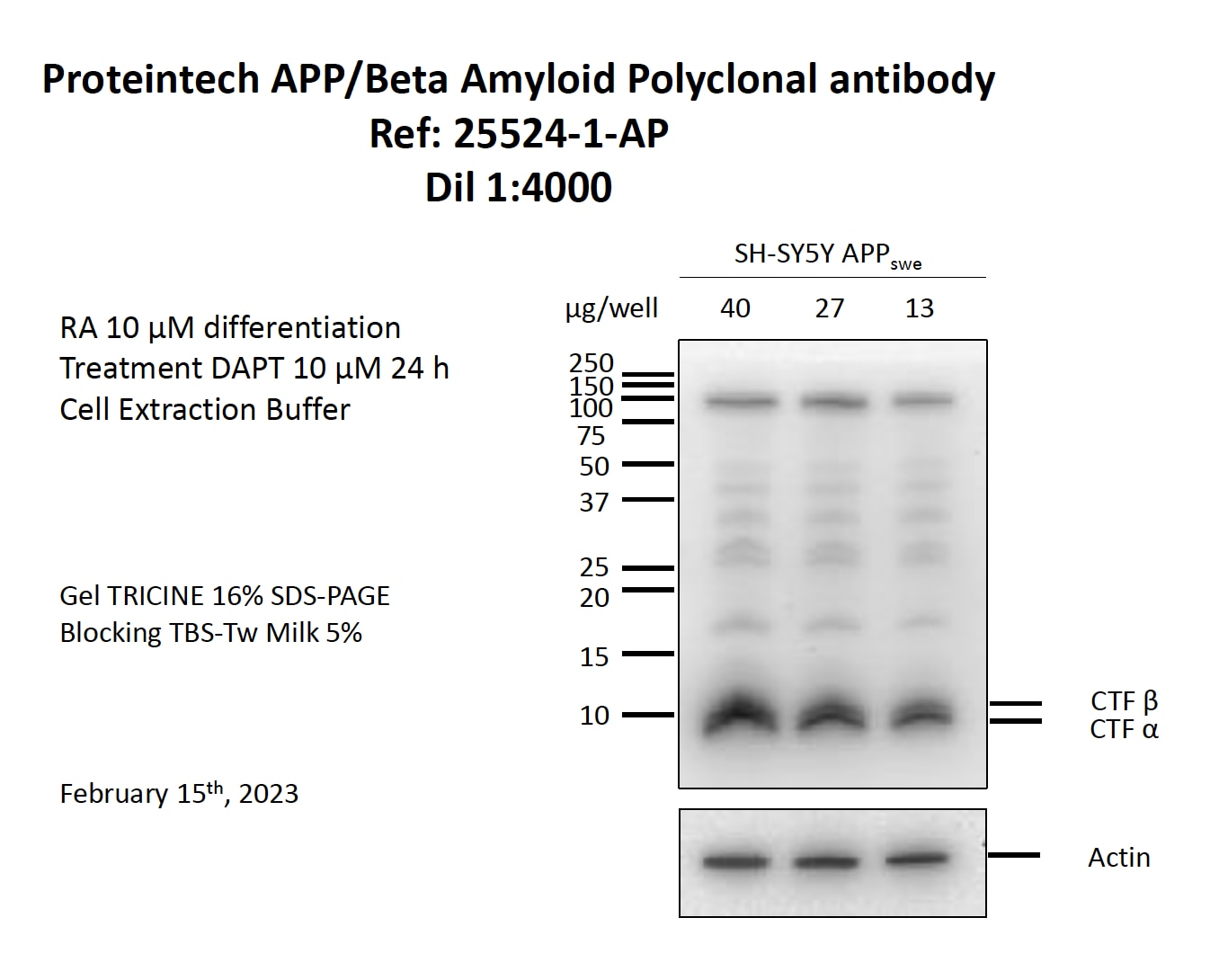 |
FH JIMMY (Verified Customer) (04-15-2019) | This antibody detects APP in the brain of 12 months C57BL/6 mice.
|

